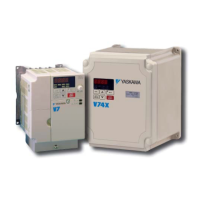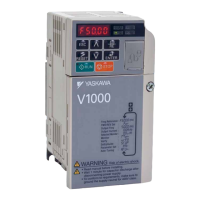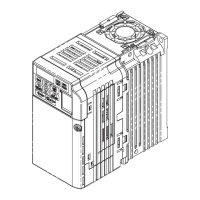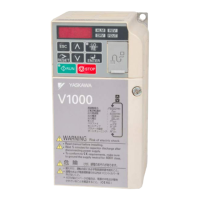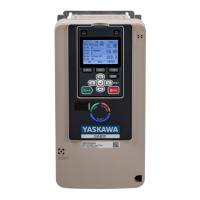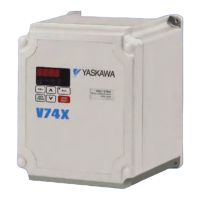n
Poor Speed Control Accuracy Above Base Speed in Open Loop Vector Motor Control
Method
Cause Possible Solution
The maximum output voltage of the drive is
determined by its input voltage. Vector control uses
voltage to control the currents within the motor. If the
vector control voltage reference value exceeds the
drive output voltage capability, the speed control
accuracy will decrease because the motor currents
cannot be properly controlled.
Use a motor with a lower rated voltage compared to the input voltage.
n
Peripheral Devices Affected by Drive Operation
Cause Possible Solutions
Radio frequency interference may be generated by
drive output PWM waveform.
• Change the Carrier Frequency Selection (C6-02) to lower the carrier frequency. This will
help to reduce the amount of transistor switching noise.
• Install an Input Noise Filter at the input power terminals.
• Install an Output Noise Filter at the motor terminals.
• Use conduit. Metal can shield electrical noise.
• Ground the drive and motor.
• Separate main circuit wiring from control wiring.
n
Ground Fault Interrupter Activates When Drive is Running
Cause Possible Solutions
The output of the drive is a series of high frequency
pulses (PWM), so there is a certain amount of leakage
current. This may cause the ground fault interrupter
to operate and cut off the drive input power.
• Change to a ground fault interrupter with a higher leakage current detection level (such as,
a sensitivity current of 200 mA or greater per Unit, with an operating time of 0.1 s or more),
or one that incorporates high-frequency corrective actions.
• Change the Carrier Frequency Selection (C6-02) to lower the carrier frequency.
Note: Leakage current increases in proportion to cable length.
6.9 Troubleshooting without Fault Display
288
YASKAWA ELECTRIC SIEP C710606 16C YASKAWA AC Drive – V1000 Technical Manual
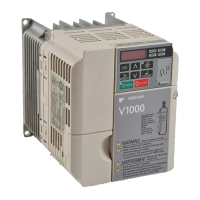
